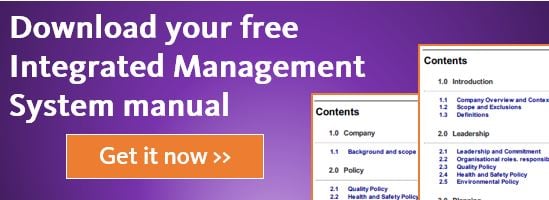We all know that decisions shouldn’t be made on information plucked from the air. We all know that gut-based decision making in business is probably a bad idea. We also know that decisions based on personalities are unlikely to be the best.
And yet, when I visit or audit companies, evidence-based decision making is the decision making tool I am least likely to see, and by quite a significant margin.
Why is evidence based decision making important?
When you consider the hundreds of decisions that are made every single day by workers, management and boards, that’s a lot of scope for getting things wrong, or at the very least, not getting things as right as you could.
It’s so very easy for businesses to eventually find themselves in an unproductive cul-de-sac, wondering how on earth they arrived there. Well, unfortunately that’s the cumulative result of many thousands of decisions made with poor information, gut-instinct or around personalities. You reach a dead-end many miles from where you were aiming.
Creating a culture of evidence-based decision making isn’t easy. As ISO 9000 states, it is complex:
ISO 9000 Clause 2.3.6.2 Rationale
"Decision-making can be a complex process and it always involved some uncertainty. It often involves multiple types and sources of inputs, as well as their interpretation, which can be subjective. It is important to understand cause and effect relationships and potential unintended consequences. Facts, evidence, and data analysis lead to greater objectivity and confidence in decision making". - ISO9000
With such complex systems it’s vital to collect data and to use it to make decisions every single day. Don’t let data passively reside in spreadsheets or databases, instead use it to drive action. It should be key in shaping your continuous improvement initiatives.
Collecting Data for Analysis
The collection of data and evidence, and then doing analysis based on that data and evidence, is key. But – and here’s the trick - you must collect the right data.
Here’s what Deming said in 1942: “Scientific data are not taken for museum purposes; they are taken as a basis for doing something. If nothing is to be done with the data, then there is no use in collecting any. The ultimate purpose of taking data is to provide a basis for action or a recommendation for action. The step intermediate between the collection of data and the action is prediction”.
One of Mango’s clients put the collection of data first and foremost when it developed its quality management processes. Each process must collect data and present it in such a way that is readable and understandable by the shop floor staff.
To do this they use display boards in each department showing things like control charts, check sheets, action lists and problem sheets. The staff enter the data themselves and can easily see if processes are in or out of control. With the relevant and up-to-date data placed exactly where it’s needed, decisions are made quickly and well.
To give you a visual, the company has moved its quality management system from this:

to this:
This change in approach has reduced the number of internal quality non-conformances and customer complaints. Money has been saved and profits have increased. The business has deftly avoided the pitfalls of shonky decision-making.
Takeaway
- When you develop your quality management processes think long and hard about the data that is collected in the process.
- Make sure you capture the data that is needed for decision making.
- Make the data visible to the shop floor staff.
- Get the staff to enter the data on display boards.
- Make decisions based on data.
- Make decisions based on data. (This isn’t a typo. It’s just that it’s such an important point that I wanted to make sure that you didn’t miss it).
View previous blogs in this series "How to Implement a QMS and Achieve ISO 9001 Certification":
How to Implement a QMS and Achieve ISO 9001 Certification - Part 1: Introduction
How to Implement a QMS and Achieve ISO 9001 Certification - Part 2: Customer Focus
How to Implement a QMS and Achieve ISO 9001 Certification - Part 3: Leadership
How to Implement a QMS and Achieve ISO 9001 Certification - Part 4: Engagement of People
How to Implement a QMS and Achieve ISO 9001 Certification - Part 5: Process Approach
How to Implement a QMS and Achieve ISO 9001 Certification - Part 6: Improvement
.png?width=200&height=51&name=image%20(2).png)





